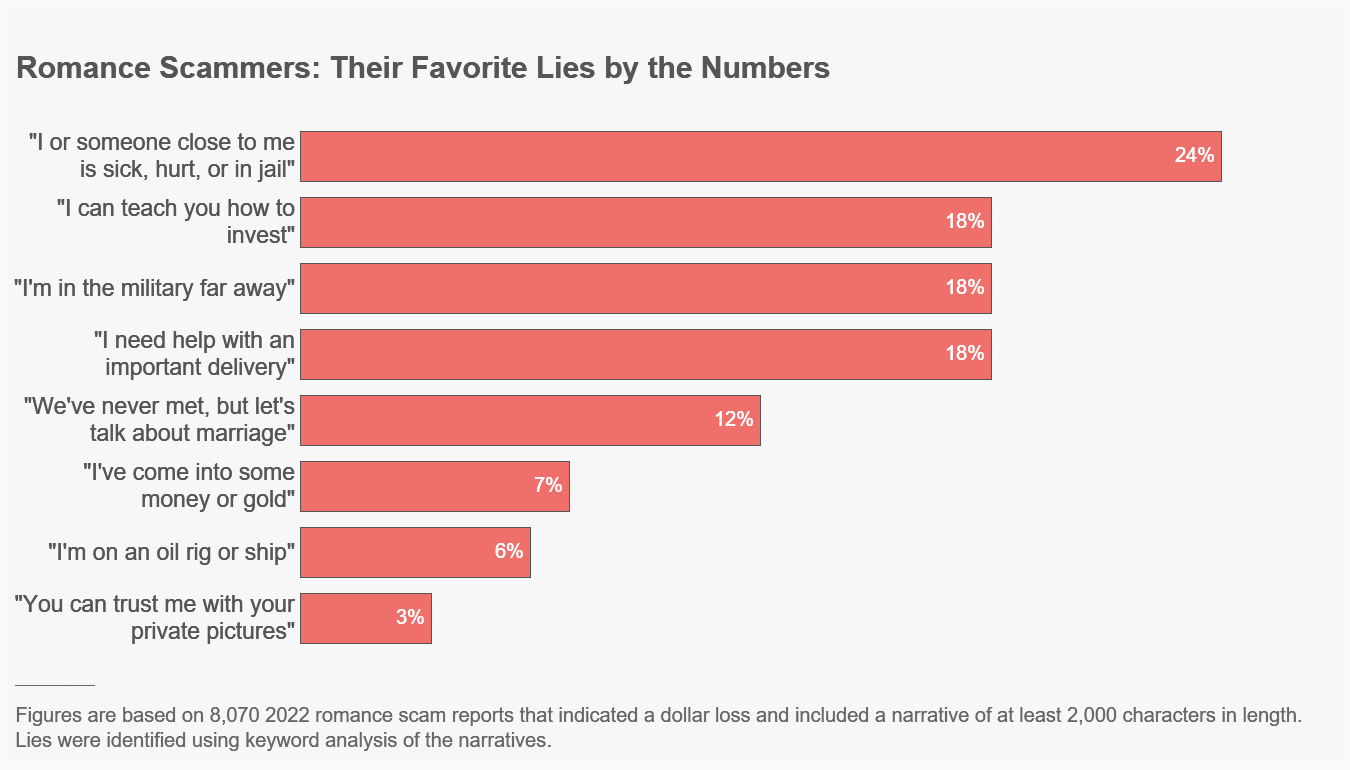The Lies Romance Scammers Tell

They're not little white lies. The lies that romance scammers tell their victims are big, ugly and expensive. The Federal Trade Commission estimates that in 2022 alone, 70,000 consumers lost $1.3 billion to romance scammers.
The FTC extracted those estimates from their new data spotlight, which found that the most common scam was telling consumers that their supposed paramour needed money because a friend or relative was sick, hurt or in jail – a lie consumers reported hearing in nearly a quarter of reports.
The next most commonly reported lie was that the scammer had great investment advice to share, followed closely by the lie that the scammer was in the military, or that they needed help making some sort of important delivery.

Trending: Sextortion
The data spotlight also highlights a growing tactic used by romance scammers: sextortion, when a romance scammer convinces a consumer to share explicit photos and then threatens to share those photos with the consumer’s social media contacts.
The spotlight notes these reports have increased more than eightfold in the past three years, with consumers ages 18-29 six times more likely than older consumers to report this form of romance scam.
According to the spotlight, consumers most often report being contacted by romance scammers via social media, though they often push to move to other messaging apps. Consumers also reported losing more money by sending cryptocurrency than any other method.
